
There are some essential and obvious signs if you are a real traveller. First of all, you are not interested only in the most crowded and touristic areas, but you tend to find magic, beauty and uniquity everywhere. Second, if you visit a location which is considered very popular and famous, you always try to see the culture and the people beyond, and you are not obsessed only with the most important sights and attractions.
It is also very likely that you are a person who is crazy about traveling, if your creativity never sleeps, and you make plans in your mind over and over again about future potential trips. Last, but not least: if you feel imprisoned, lonely or unhappy after not going anywhere for a while, there is a high chance that traveling is not only a passion, but an inalienable part of your identity. Well, during the new lockdown I definitely had the symptoms mentioned above, and I was looking forward to the next chance to be out of town, no matter where and when exactly.

Of course, we should remember that not everyone is a traveling type of person, which is also completely normal. It is a common phenomenon too, that some of us have periods in their lives when we are more eager to explore new environments, and sometimes we are rather conformists - the point in general is to have some dynamics and variety in our surficial everydays.
Even if we prefer to stay home, many of us go on journeys in a sense, even if we do not always realize that; some people go on classic city trips; some choose nature, but even when we decide to read a book or watch a movie, they can indeed be a type of spiritual adventure for our curiosity.

Nevertheless, I consider it crucial to find a balance between material and virtual realities and traveling in the common sense meaning of it, because this is a way of self-expression to me, even if it sounds weird. Namely, I mean that if you go to a place you have never been before, you are able to create your personal impressions and build up a particular place in your head: a subjective world, that completely lives and works as you wish.
You can decide what to see, what to notice, what to keep in mind and what structure or order you are going to follow during the trip. Thus, you will have you own narration and interpretation of the place where you are, no matter if you are alone or with a group, or whether it is organized or spontaneous.

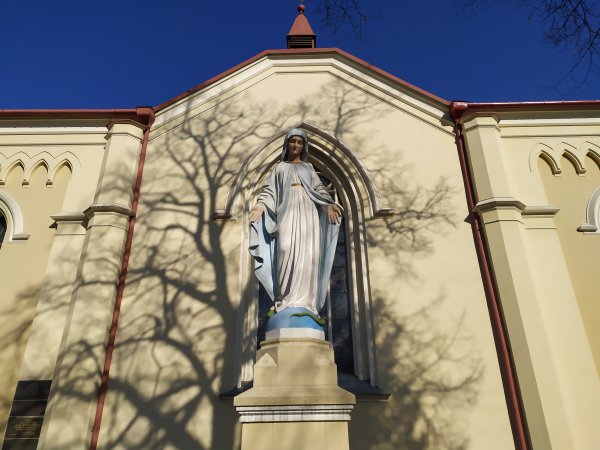
Since I knew that I was going to say a farewell for Poland for some time, I had decided to visit some nearby destinations in Silesia as long as I was still staying here. I am aware of the fact that many important cities including the capital and other regional centres are missing from the list so far, but sometimes it is better to have a slow lifestyle and focus on one goal at one time.
My first trip was going to a city which had been among my ideas for a long time, practically since I used to live in Ostrava, because this location, Rybnik, is more or less on the half way between Katowice and Czech Republic and it is very easy to reach on railways.
Apart from the fact that it is maybe the second or third most important city in Upper Silesia after its capital, this place was also interesting for me due to its name, which comes from ryba, the Polish word for fish, that can either be related to medieval trade, a fascinating myth or the lake (Jezioro Rybnickie) lying not so far from the city. Apparently the least poetic and exciting version is the truth: the name is connected to the fishing ponds you can find all around the area.


Anyway, it is such a remarkable symbol for Rybnik that we can even find a fish in the coat-of-arms of the municipality and, if we are attentive enough, all around the city from souvenir shops to sport stadiums, parks, bus stops, gutter covers and public trash bins.
Somehow it also came to my mind how significant water creatures were in Slavic mythology and fairy tales, such as mermaids, rusalkas or vodyanoys (in Polish: wodnik) and I was daydreaming for a moment that the weather already allowed me to spend more time in the forests to feel the spirit of such ancient, mysterious and prehistoric stories...

...let’s get back from our fantasy world to the ground though. Rybnik in general is not a city full of sights and neither is a huge metropolis where you can get lost for hours. However, it still has a friendly and familiar atmosphere, where you can just walk and refill your mental resources by observing the locals or play my favourite activity, which is to imagine how it could be to live in that city as a citizen of the place, which feeling is usually the final goal of many of my trips.
Apart from the medieval outfit of the resident rynek, so the old town’s (market) square, the city looks like quite a 20th century one with its buildings, and when I was thinking about its vibes and way of construction, it really reminded me to Western-Hungarian cities like Győr, Sopron or Kőszeg with its classicist and Baroque ornamentics.


Apart from the small hidden places and streets I explored, the most famous one was probably the Basilica of Saint Anthony (Bazylika Świętego Antoniego), which really summoned another church of the same title in my brain: the one from a small Silesian town, Piekary Śląskie, which happened mostly due to the colors, shapes and similarities of the architecture and the respectable, noble silence that was ruling the whole area in both cases.
To be honest, besides some small monuments, more or less we can find everything in the centre, but it does not mean that it is not a pure pleasure just to have an endless walk by the main road and discovering back and forth in the historical streets. It was a pity though that everything was still close, because I noticed that there were some pubs, cafés and cultural spots with promising topics and designs (for example Japanese or Latin-American vibes). Hopefully I will have the chance to see a Polish city like Rybnik in its full marvel someday in the future.

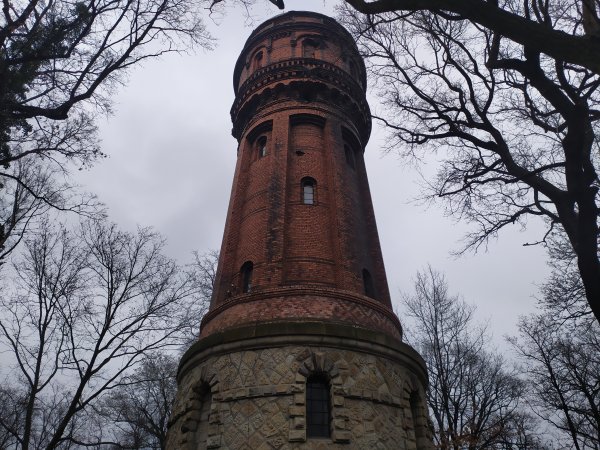
The next destination had also been tempting me almost since my arrival to the country, since it was very close to me - a town in the agglomeration of Katowice, so the part of the so-called Metropolita Katowicki. The greatest miracle of Będzin, which makes the place really iconic in the whole region, is the wonderful medieval castle it has with no doubt.
If you check the photos of the complex before your trip, you might be very surprised, because actually it is a very tiny castle, and you can have a walk around it quite quickly. Yet it has all the romantic and mystical vibes you can imagine with its tower, bastion, entrance gate and walls, so you can really feel that you are in the middle of a historical or a fantasy movie.
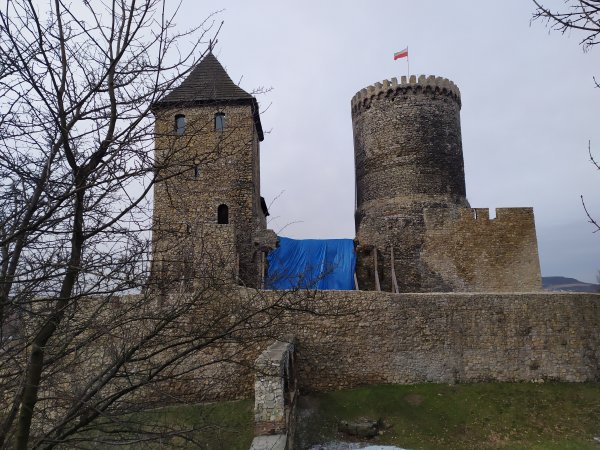
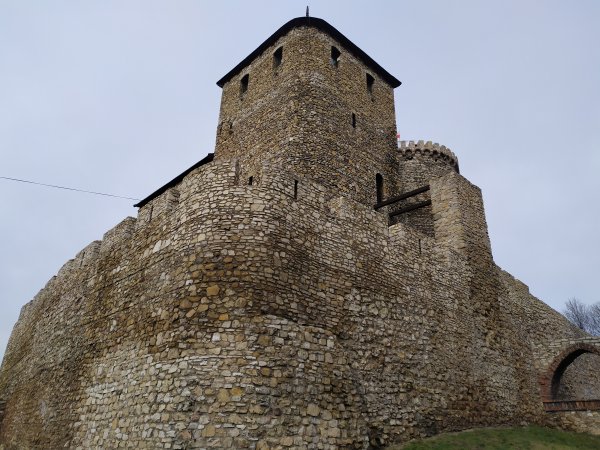
The castle hill and its vegetation, the trees, the crows, put you immediately into the scene of a Celtic, Slavic or Nordic saga and you can hear the supernatural magic deep inside your veins. Of course, there is a museum in the castle and you can go up to see the view of the surroundings, but if you do not have this option, you may also have a great panorama from the castle yard.
The environment and the spirit of the place reminded me to those castles I could find in fairy tales, or the ones you can observe in the North of Hungary, Czechia and Transylvania, but the complex also gave me the impressions of the castle of Tata, my city of high school studies.
Just to have some kind of Polish-Hungarian fun fact again: some scenes of the movie adaptation of The Witcher (based on the popular Polish franchise, Wiedźmin) were actually shot in Tata - although I think that the humble and intact Będzin could certainly be the location of similar productions as well, maybe even better. One thing is sure, that if I ever want to own the authentic model of a real castle on my bedroom shelf, it should be the one of this town.


However, Będzin is also more than a castle for careful viewers. For instance, it has a huge cemetery on the top of the hill, which is not just monumental due to the endless ocean of white tombs, but we can also find a lot of special graves that make the place very spiritual and unique, mostly concentrated around the chapel. These artworks somehow tell us their stories with all the angels, saints, crosses, holy virgins, plane propellers (seriously) and other figures.
Besides, we can find some traditional countryside homes close to the castle, and if one thinks that they had enough of the transcendent whispers of the ancestors and the past, we can discover the socialist realist leftovers, flats and warehouses or 20th century style ruins in the centre, which - due to some unknown reasons - was like walking in the middle of a Southern-Italian town for me.

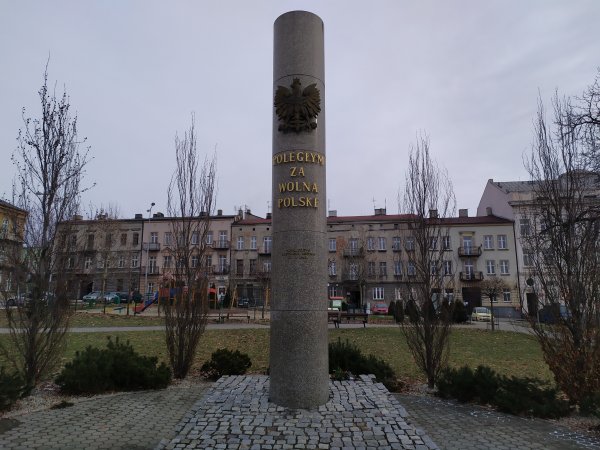
The third location in this summary is surely among the best-knows in Poland, because Częstochowa is not just one of the most important Polish religious centres besides Gniezno, but it is also a worldwide famous pilgrimage destination such as Lourdes, Santiago de Compostela or Montserrat, thanks to the iconic picture of the Black Madonna (Czarna Madonna) all together with her Baby Jesus. Unfortunately I did not have the opportunity to see the painting in person, which was painted personally by Saint Luke himself according to the legend, and is a national symbol of Polish independence as well.
This relic is so strongly inside Polish culture that there is a phrase some people use very often (informally) if they are surprised: namely Matka Boska [Częstochowska], which can be translated in the sense of 'oh, my God'. I have heard a much more serious story from the locals related to the holy picture, because it has always had a double function: firstly, those who needed the guidance of Virgin Mary, could ask for her help and leave their vow offerings at the sacred place, and secondly, those who were grateful because of something could also bring their gifts there - this way many of the offerings came from the survivors of the nearby Auschwitz after the Second World War.


The worship of the Holy Mother is not only a common tradition of the Polish catholicism, but of the Hungarian one as well: based on the chronicles, Hungary was devoted to Virgin Mary by our first king, Stephen I and it has been the ‘Kingdom of Virgin Mary’ since then. Częstochowa is also special in the relationship of our countries, because it is one of the final destinations of the Saint Mary Way (Mária-út) that also crosses Hungary.
The most important Hungarian stop, if we are walking along this path towards Poland, is most probably Márianosztra with its Pauline community I visited many times as a child. Well, as a matter of fact, this Order of Saint Paul was founded by a Hungarian clerical, Blessed Eusebius (in Hungarian: Boldog Özséb), and the gorgeous monostory complex of Częstochowa, where the Black Madonna is kept, was also built by the Pauline Fathers.


The monostory can be found at the end of a long avenue (Aleje Najświętszej Maryi Panny) and on the top of the highest point of the city, Jasna Góra (‘Luminous Mount’), which is also a beautiful open park full of statues related to the Passion of Christ and other holy scenes. The glorious, rich, airy and heavenly geometrics of the church and monostory reminded me a bit of the one of Kraków, but I am not sure it is possible to compare its charm to anything else, although it had the typical characteristics of the Polish catholic architecture.
By walking around the monostory, we can find way more miracles though: since the place can be considered as a kind of strategic point and castle, one can have a look at the monumental fortificated walls and the canons still showing the owner or the manufacturer of the weapons.
And the religious trip has far not been finished here yet, since the city centre is full of further churches. I can personally recommend the marvelous Saint Jacob’s Church on the main square; the orthodox church with its incredible round shapes and vivid yellow shades; the local evangelical church; the Church of Holy Zygmunt, and the Basilica of the Holy Family (Bazylika Świętej Rodziny).
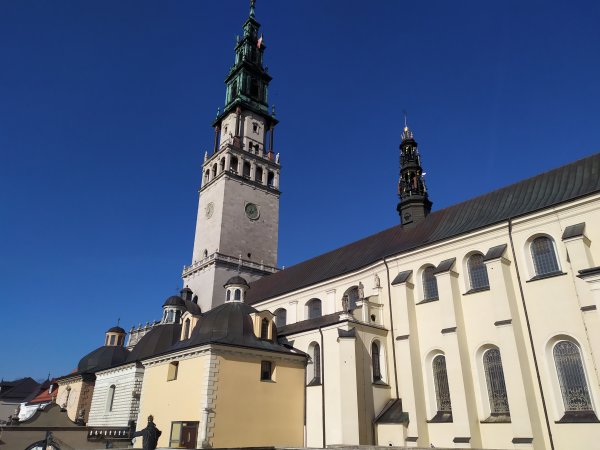

The non-clerical buildings obviously have a less important role in the city, however, the town’s museum on the main square and the retro architecture of the art gallery might take our attention. I also noticed an interesting cultural reference by the facade of this second complex: namely I found a replica and pop-cultural version of the famous Zbruch Idol - a religious column which symbolises Sviatovid, the four-faced ultimate god of the Slavic pantheon, which makes the idol the most iconic survived artifact of the pagan Slavic culture.
Honestly, I did not expect such a monument in the heart of the Polish catholicism, so it was fascinating to see a different side of the city, which, by the way, also has a Hungarian name due to the fact that the Duchy of Silesia was conquered by the Black Army of King Matthias Corvinus: so while we can say Opoly for Opole or Boroszló for Wrocław, we can traditionally call Częstochowa as Csensztokó, although it is not really used in practice by us.


There is still a lot left to see just here, in this special corner of Southern-Poland called Silesia; this interesting cultural melting pot of the country carrying Czech, Moravian, Slovak, German, Jewish, Hungarian and goodness knows how many other heritages - and let's not forget about the Silesians either, who also consider themselves to be an independent ethnic group.
Unfortunately, life is way more complicated sometimes than traveling and exploring all the time, so I might have to suspend these ambitions for a while - but it is important to remember that we should never use our duties and responsibilities as excuses, because if one wants, they can always find the time for some short adventures, no matter if it will be somewhere in the exotic distance or just in the close neighbourhood, and these trips are always precious enough to give us something outstanding and memorable for the future.


